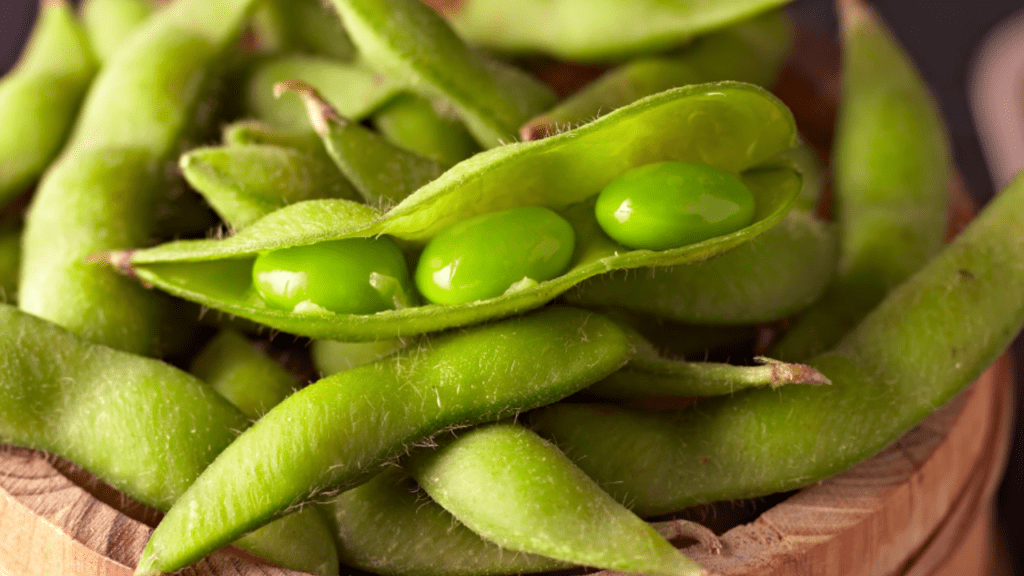
Edamame Seeds for Planting: How to Grow Fresh Edamame at Home
Growing your own edamame at home can be a fun and rewarding experience. Not only will you have access to fresh, nutritious edamame, but you’ll also have the satisfaction of growing your own food. To get started, you’ll need to purchase some edamame seeds for planting. These can typically be found at your local garden center or online. When selecting your seeds, be sure to choose a variety that is suitable for your growing region and climate. It’s also important to choose high-quality seeds from a reputable supplier to ensure the best results. Once you have your seeds, you can begin the process of planting and caring for your edamame plants. With a little bit of effort and attention, you’ll be able to enjoy a bountiful harvest of fresh edamame right from your own garden.
Edamame has become increasingly popular in culinary uses due to its delicious flavor and versatility in cooking. It is commonly used in salads, stir-fries, and as a healthy snack. Edamame is also known for its nutritional benefits, as it is a good source of plant-based protein, fiber, and various vitamins and minerals. It is particularly rich in folate, vitamin K, and manganese. Additionally, edamame is a great source of antioxidants, which can help protect the body from oxidative stress and reduce the risk of chronic diseases. Its popularity in culinary uses and its nutritional benefits make it a popular choice for those looking to add more plant-based protein and nutrients to their diet.
Table of Contents
ToggleUnderstanding Edamame
Edamame is a popular and nutritious food that has become increasingly popular in culinary uses. It is a young soybean that is harvested before it ripens and is commonly found in salads, stir-fries, and as a healthy snack. Edamame is known for its delicious flavor and versatility in cooking, making it a popular choice for those looking to add more plant-based protein and nutrients to their diet. In addition to its culinary uses, edamame is also packed with nutritional benefits. It is a good source of plant-based protein, fiber, and various vitamins and minerals. It is particularly rich in folate, vitamin K, and manganese. Additionally, edamame is a great source of antioxidants, which can help protect the body from oxidative stress and reduce the risk of chronic diseases. This makes edamame a great addition to a healthy and balanced diet. If you’re interested in growing your own edamame, it is relatively easy to plant and care for. With a little bit of effort and attention, you can enjoy a bountiful harvest of fresh edamame right from your own garden.
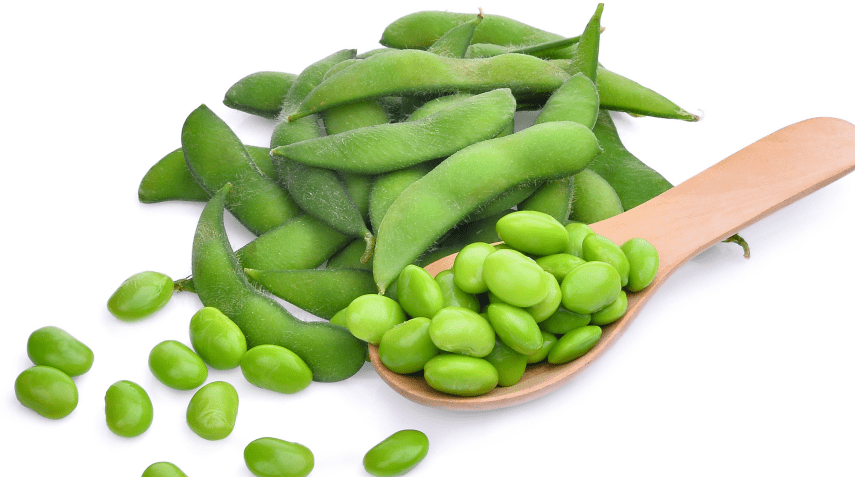
Describe what edamame is, including its botanical characteristics.
Edamame is a young soybean that is harvested before it has ripened. It is commonly found in East Asian cuisine and is often served as a snack or appetizer. Edamame pods are usually boiled or steamed and then sprinkled with salt. The beans inside the pods are then squeezed out and eaten.
From a botanical standpoint, edamame is a type of soybean that belongs to the legume family. It grows in clusters on bushy plants and has fuzzy, light green pods that contain the soybeans. The soybeans themselves are typically green in color and are harvested when they are still soft and immature.
Not only is edamame delicious, but it also offers a wide range of nutritional benefits. It is a great source of plant-based protein, fiber, and various vitamins and minerals. Edamame is particularly rich in folate, vitamin K, and manganese. Additionally, it is a great source of antioxidants, which can help protect the body from oxidative stress and reduce the risk of chronic diseases. This makes edamame a great addition to a healthy and balanced diet. If you’re interested in growing your own edamame, it is relatively easy to plant and care for. With a little bit of effort and attention, you can enjoy a bountiful harvest of fresh edamame right from your own garden.
Discuss the history and cultural significance of edamame in various cuisines, especially Japanese cuisine.
Edamame has a long history in Japanese cuisine, where it is often served as a snack or appetizer. In Japan, edamame is enjoyed by people of all ages and is often served in a variety of dishes, such as salads, stir-fries, and soups. Edamame is also commonly used as a filling for sushi rolls and as a topping for rice bowls. Its cultural significance is deeply rooted in Japanese culinary traditions and is an essential part of the country’s food culture.
Outside of Japan, edamame has also become popular in other cuisines, especially in Asian and health-conscious Western cuisines. Its versatility and nutritional benefits have contributed to its widespread popularity, and it is now commonly found in grocery stores and restaurants around the world.
Benefits of Growing Edamame from Seeds
Detail the health benefits of consuming fresh edamame.
Fresh edamame is a great source of plant-based protein, making it an excellent option for vegetarians and vegans. It is also rich in fiber, which can aid in digestion and promote gut health. Additionally, edamame is a good source of vitamins and minerals, such as folate, vitamin K, and manganese. These nutrients support overall health and can contribute to a well-balanced diet.
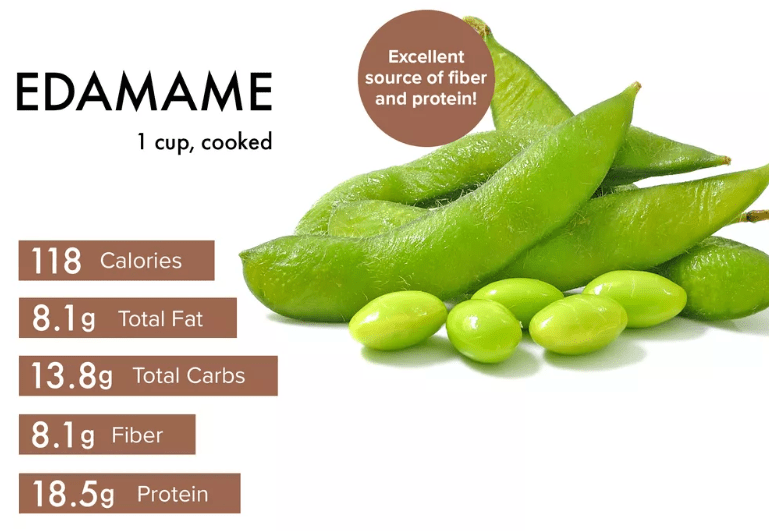
Furthermore, edamame contains antioxidants, such as flavonoids and isoflavones, which can help protect the body from oxidative stress and reduce the risk of chronic diseases. Consuming fresh edamame can also support heart health, as it is low in cholesterol and saturated fat, making it a heart-healthy food option.
Overall, incorporating fresh edamame into your diet can provide numerous health benefits, making it a nutritious and delicious addition to your meals.
Discuss the cost-effectiveness and convenience of growing edamame at home.
Growing edamame at home can be a cost-effective and convenient way to incorporate this nutritious food into your diet. By growing your own edamame, you can ensure that it is fresh and free from pesticides, giving you peace of mind about the quality of the food you are consuming. Additionally, growing edamame at home allows you to have a sustainable source of this nutritious legume, reducing the need to purchase it from the store. It is also a convenient option, as you can easily harvest the edamame when it is ready and incorporate it into your meals right away. Furthermore, growing edamame at home can be a fun and rewarding experience, allowing you to connect with the process of growing your own food and promoting a sense of self-sufficiency. Overall, growing edamame at home can be a cost-effective and convenient way to enjoy this nutritious and delicious food.
Selecting the Right Edamame Seeds for Planting
Provide tips on selecting high-quality edamame seeds.
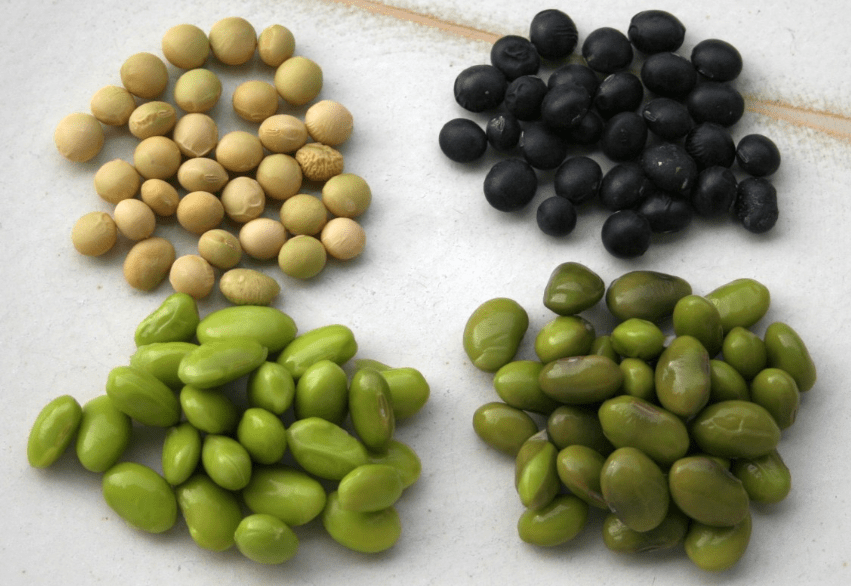
When selecting edamame seeds for planting, it is important to choose high-quality seeds that will yield a bountiful harvest. Here are some tips for selecting the right edamame seeds:
- Look for certified organic or non-GMO seeds to ensure that they are free from harmful chemicals and genetic modifications.
- Choose seeds from reputable suppliers or nurseries to ensure that they are of high quality and have been properly stored.
- Consider the variety of edamame seeds based on your climate and growing conditions. Some varieties may be more suitable for certain climates or soil types.
- Check the expiration date on the seed packet to ensure that the seeds are fresh and will have a high germination rate.
- Consider the size and color of the seeds, as larger and uniform seeds may indicate higher quality.
By selecting high-quality edamame seeds for planting, you can ensure a successful and productive harvest of this nutritious legume.
Discuss reputable sources for purchasing edamame seeds, including garden centers and online retailers.
When looking for edamame seeds, it’s important to find reputable sources to ensure the quality and purity of the seeds. One option is to visit a local garden center or nursery that specializes in selling vegetable and fruit seeds. These centers often carry a variety of seed options and can provide advice on the best varieties for your specific growing conditions.
Another option is to purchase edamame seeds from reputable online retailers that specialize in selling organic and non-GMO seeds. Look for certified organic or non-GMO seeds to ensure that they are free from harmful chemicals and genetic modifications. It’s also important to choose seeds from suppliers or nurseries with a good reputation to ensure high-quality seeds that have been properly stored.
When selecting edamame seeds, consider the variety based on your climate and growing conditions. Some varieties may be more suitable for certain climates or soil types, so it’s important to choose seeds that will thrive in your specific environment. Additionally, check the expiration date on the seed packet to ensure that the seeds are fresh and will have a high germination rate.
Lastly, consider the size and color of the seeds. Larger and uniform seeds may indicate higher quality, so take these factors into consideration when making your purchase. By selecting high-quality edamame seeds for planting, you can ensure a successful and productive harvest of this nutritious legume.
Preparing for Planting
Detail the steps to prepare the soil and planting area for edamame seeds.
To prepare the soil and planting area for edamame seeds, start by choosing a location that receives full sun and has well-drained soil. Clear the area of any weeds or debris and loosen the soil to a depth of about 6 inches. Remove any large rocks or clumps of soil to create a smooth planting surface. It’s important to test the soil pH and make any necessary amendments to ensure it falls within the optimal range for edamame, which is typically between 6.0 and 7.0. Add organic matter, such as compost or well-rotted manure, to the soil to improve its fertility and structure.
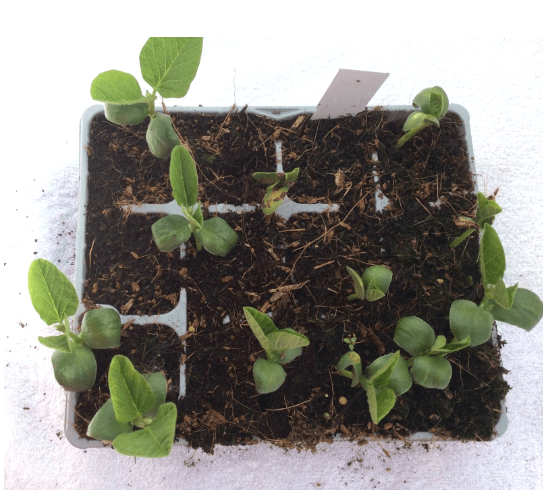
Once the soil is prepared, create rows that are spaced about 18-24 inches apart to allow for proper spacing between the edamame plants. Plant the seeds about 1 inch deep and space them about 2-3 inches apart within the rows. Cover the seeds with soil and lightly water the area to ensure good seed-to-soil contact.
After planting, continue to water the area as needed to keep the soil consistently moist, but not waterlogged. Edamame plants also benefit from a balanced fertilizer application about 3-4 weeks after planting to support their growth and production.
By following these steps to prepare the soil and planting area for edamame seeds, you can set the stage for a successful and bountiful harvest of these delicious and nutritious legumes.
Discuss the ideal growing conditions for edamame, including soil type, temperature, and sunlight.
Edamame plants thrive in well-drained, fertile soil with a slightly acidic to neutral pH level. It’s important to add organic matter, such as compost or well-rotted manure, to the soil to improve its fertility and structure. Once the soil is prepared, create rows that are spaced about 18-24 inches apart to allow for proper spacing between the edamame plants. Plant the seeds about 1 inch deep and space them about 2-3 inches apart within the rows. Cover the seeds with soil and lightly water the area to ensure good seed-to-soil contact. After planting, continue to water the area as needed to keep the soil consistently moist, but not waterlogged. Edamame plants also benefit from a balanced fertilizer application about 3-4 weeks after planting to support their growth and production. In terms of temperature, edamame plants prefer warm, sunny conditions and thrive in temperatures around 75-85 degrees Fahrenheit. They also require at least 6-8 hours of sunlight per day to grow and produce healthy, flavorful pods. By following these steps to prepare the soil and planting area for edamame seeds, you can set the stage for a successful and bountiful harvest of these delicious and nutritious legumes.
How to Plant Edamame Seeds
Step-by-step guide on planting edamame seeds, including seed preparation and sowing techniques.
Planting edamame seeds is a simple and rewarding process. Start by preparing the soil in a sunny, well-drained area of your garden. Ensure that the soil is loose and free of debris, as edamame plants prefer well-aerated soil for optimal growth. Once the soil is prepared, it’s time to plant the seeds. Begin by soaking the edamame seeds in water for 24 hours before planting. This will help to speed up the germination process. After soaking, plant the seeds about 1 inch deep and space them 2-3 inches apart within the rows. Cover the seeds with soil and lightly water the area to ensure good seed-to-soil contact.
After planting, continue to water the area as needed to keep the soil consistently moist, but not waterlogged. Edamame plants also benefit from a balanced fertilizer application about 3-4 weeks after planting to support their growth and production. In terms of temperature, edamame plants prefer warm, sunny conditions and thrive in temperatures around 75-85 degrees Fahrenheit. They also require at least 6-8 hours of sunlight per day to grow and produce healthy, flavorful pods.
Discuss spacing, depth, and watering requirements for optimal germination and growth.
To ensure optimal germination and growth of edamame plants, it is important to pay attention to spacing, depth, and watering requirements. When planting edamame seeds, it is beneficial to soak them in water for a few hours before planting to speed up the germination process. Once soaked, plant the seeds about 1 inch deep and space them 2-3 inches apart within the rows. Cover the seeds with soil and lightly water the area to ensure good seed-to-soil contact.
After planting, continue to water the area as needed to keep the soil consistently moist, but not waterlogged. Edamame plants also benefit from a balanced fertilizer application about 3-4 weeks after planting to support their growth and production.
In terms of temperature, edamame plants prefer warm, sunny conditions and thrive in temperatures around 75-85 degrees Fahrenheit. They also require at least 6-8 hours of sunlight per day to grow and produce healthy, flavorful pods. By following these spacing, depth, and watering requirements, you can ensure the optimal germination and growth of your edamame plants.
Caring for Edamame Plants
Detailed care guide for edamame plants, including watering, fertilizing, and pest management.
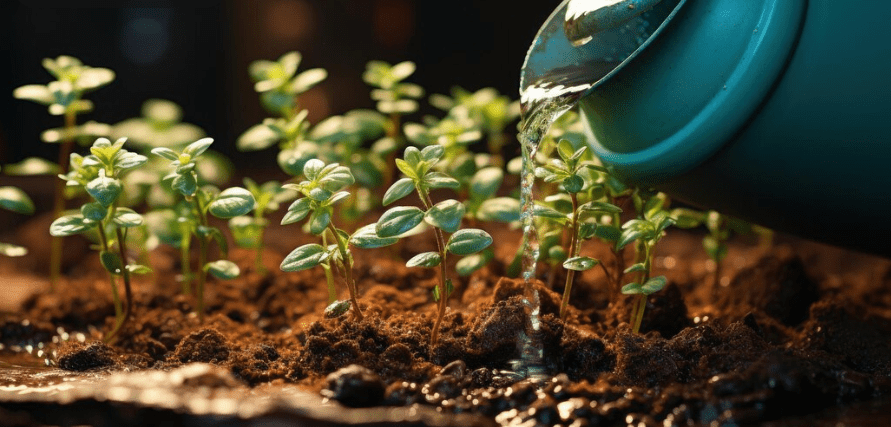
Edamame plants require specific care to ensure their growth and production. When planting the seeds, it’s important to soak them first and then plant them about 1 inch deep and space them 2-3 inches apart within the rows. After planting, it’s crucial to water the area as needed to keep the soil consistently moist, but not waterlogged. Additionally, edamame plants benefit from a balanced fertilizer application about 3-4 weeks after planting to support their growth and production. In terms of temperature, edamame plants prefer warm, sunny conditions and thrive in temperatures around 75-85 degrees Fahrenheit. They also require at least 6-8 hours of sunlight per day to grow and produce healthy, flavorful pods. When it comes to pest management, it’s important to be vigilant and take appropriate measures to protect the plants from common pests such as aphids and caterpillars. By following these spacing, depth, and watering requirements, you can ensure the optimal germination and growth of your edamame plants.
Discuss common pests and diseases affecting edamame and strategies for prevention and control.
Edamame plants, like many other crops, are susceptible to certain pests and diseases. One common pest that affects edamame plants is aphids, which can cause damage by sucking the sap from the plant. To prevent aphid infestations, it’s important to regularly inspect the plants and remove any aphids that are found. Additionally, you can use insecticidal soap or neem oil to control aphids and prevent them from spreading.
Another common pest that can affect edamame plants is caterpillars, which can feed on the leaves and pods of the plants. To prevent caterpillar damage, you can use row covers to protect the plants or handpick the caterpillars off the plants. You can also use Bacillus thuringiensis (Bt) as a biological control method to manage caterpillar infestations.
In terms of diseases, edamame plants can be susceptible to fungal diseases such as powdery mildew and root rot. To prevent these diseases, it’s important to practice good sanitation by removing any infected plant debris and keeping the garden area clean. Additionally, you can use fungicides as a preventative measure to protect the plants from fungal diseases.
Highlight the importance of proper ventilation and air circulation to prevent fungal diseases.
Proper ventilation and air circulation are crucial in preventing fungal diseases in plants, including edamame plants. Fungal diseases such as powdery mildew and root rot can thrive in environments with poor air circulation and high humidity. To prevent these diseases, it’s important to ensure that your garden has good airflow and ventilation. This can be achieved by spacing out your plants to allow for proper air circulation and avoiding overcrowding. Additionally, you can consider using fans to improve air movement and reduce humidity levels. Proper ventilation and air circulation not only help prevent fungal diseases but also promote overall plant health and vigor. It’s an important aspect of plant care that should not be overlooked.
Pruning and Maintenance
Are essential for the health and growth of plants, including edamame plants. Regular pruning helps to remove dead or diseased branches, promote new growth, and improve air circulation within the plant. It’s important to prune your plants at the right time and in the right way to avoid causing damage. Proper maintenance also includes regular watering, mulching, and fertilizing to ensure that your plants have the nutrients they need to thrive. By staying on top of pruning and maintenance tasks, you can help your edamame plants to grow strong and healthy, producing a bountiful harvest. Regular monitoring and care of your plants will result in a more successful gardening experience.
Harvesting Edamame
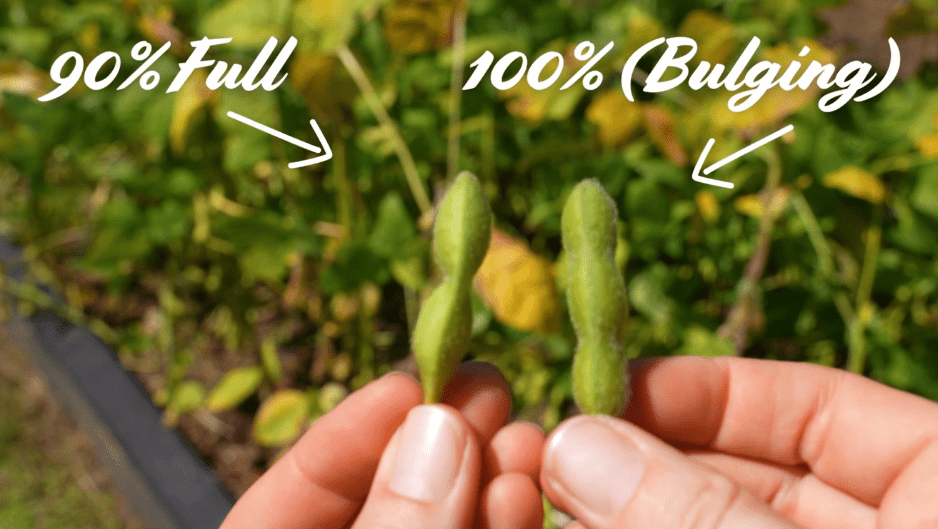
Is an important part of the growing process. When the pods are plump and firm, it’s time to pick them. It’s important to harvest them at the right time to ensure the best flavor and texture. Simply grasp the pod with one hand and use your other hand to pull the pod off the plant. Be sure to harvest your edamame regularly to encourage continuous pod production. Once harvested, the pods can be blanched in boiling water for a few minutes and then immediately placed in an ice bath to stop the cooking process. This will help to preserve the vibrant green color and fresh flavor. Enjoy your homegrown edamame as a healthy and delicious snack or add it to your favorite recipes. Happy harvesting!
Common Problems and Solutions

When growing edamame, there are a few common problems that you may encounter. One common issue is pests, such as aphids or caterpillars, which can damage the plants. To prevent this, you can use insecticidal soap or neem oil to control the pests. Another common problem is overwatering, which can lead to root rot. To avoid this, make sure to water the plants consistently but not excessively. Additionally, edamame plants may suffer from nutrient deficiencies, so it’s important to use a balanced fertilizer to provide them with the necessary nutrients. By being proactive and addressing these common problems, you can ensure a successful edamame harvest. Happy gardening!
In conclusion, growing edamame at home can be a rewarding and enjoyable experience. By following the steps outlined in this post, you can have a bountiful harvest of fresh, delicious edamame right in your own backyard. Whether you’re looking to add some variety to your garden or simply enjoy the satisfaction of growing your own food, planting and caring for edamame seeds is a great way to do so. So, grab some seeds and get ready to enjoy the fruits (or vegetables) of your labor!
Frequently asked questions And Answer
Edamame seeds are young soybeans that are harvested before they fully mature. They are a popular snack and can also be grown at home for fresh, delicious edamame.
Yes, edamame can be easily grown at home, either in a garden or in pots.
Edamame seeds should be planted in the spring, after the last frost has passed.
Plant the seeds about 1 inch deep and 2-3 inches apart in well-draining soil. Water the seeds regularly and make sure they receive plenty of sunlight.
Edamame plants typically take about 80-100 days to mature and be ready for harvest.
Harvest edamame pods when they are plump and firm. Simply pick the pods off the plant and remove the beans from the pods.
Yes, you can save some of the seeds from your harvested edamame to plant the following year. Just make sure to store them in a cool, dry place.
Edamame plants can be susceptible to pests such as aphids and diseases such as root rot. Keep an eye on your plants and take appropriate measures to prevent and treat any issues that may arise.
